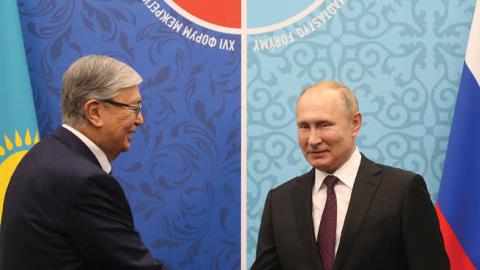Vladimir Putin’s invasion of Ukraine has exposed deep failures in Russian strategic culture and undermined Russian prestige across the West. Viewed from Almaty, in the foothills of the Tian Shan mountains, however, the Russian leader looms large. It is not only that Moscow’s propaganda still shapes the worldview of Kazakhstan’s sizable Russian minority (about 20% of the population, heavily concentrated in regions adjacent to Russia). This also has been a year that, for many in Kazakhstan, underlined how much power Russia has over the future of this oil- and mineral-rich Central Asian country.
Thinly populated Kazakhstan, where 19 million people inhabit a territory roughly the area of Alaska and Texas combined, occupies a strategic position at the geographical center of Asia.
Its border with Russia, at more than 4,200 miles, is the longest land frontier in the world, and it also shares a roughly 950-mile border with China. It accounts for more than half the total gross domestic product of the five Central Asian republics and, in addition to enormous oil reserves, it has the world’s second-largest supply of uranium.
Read the full article in The Wall Street Journal

















